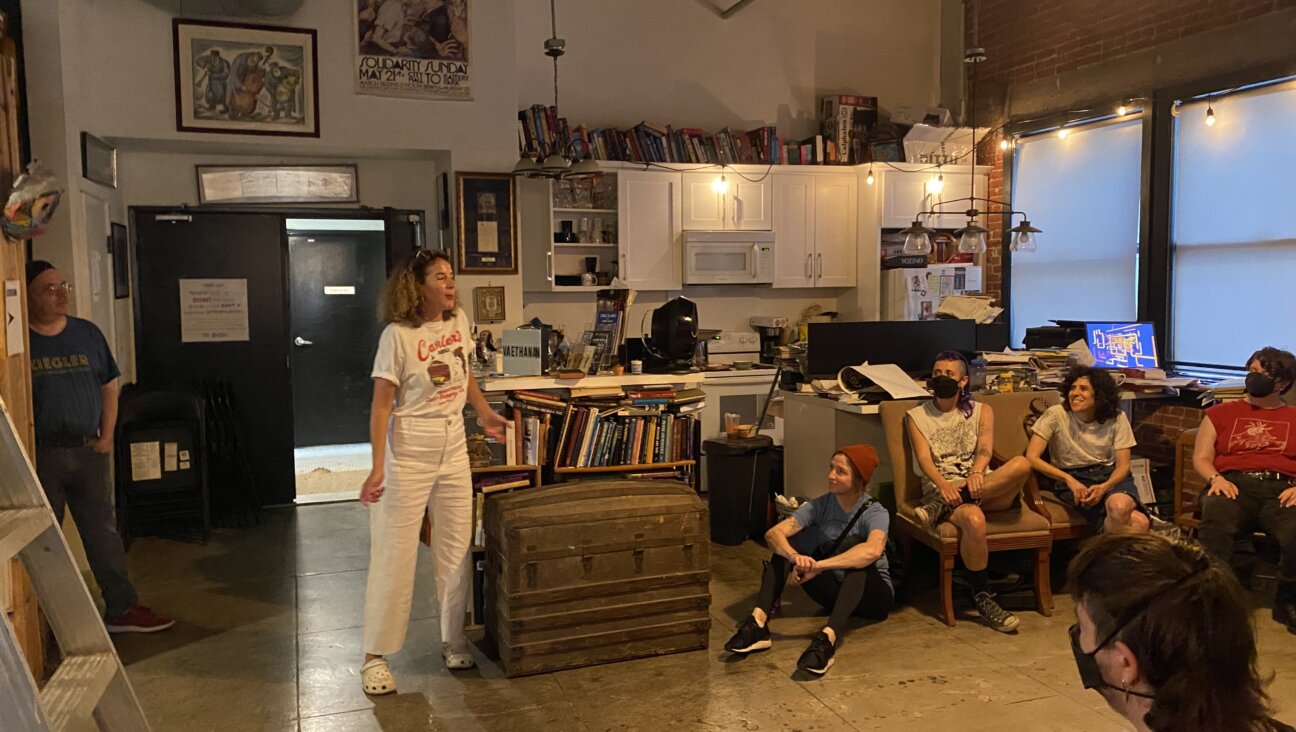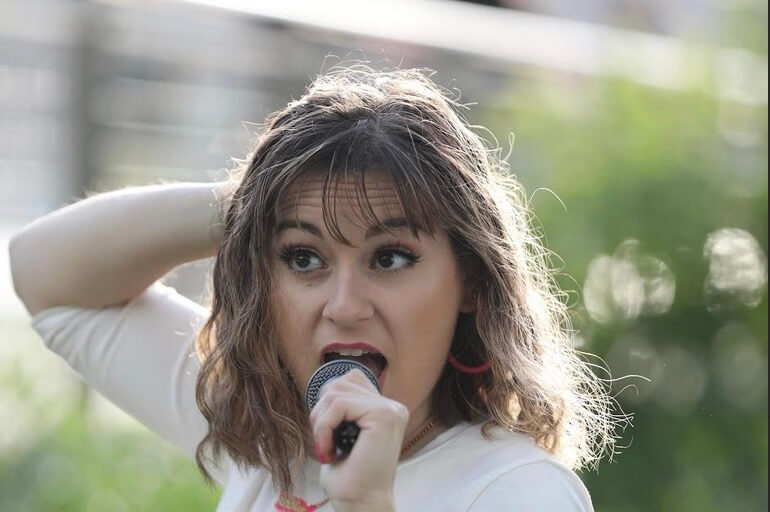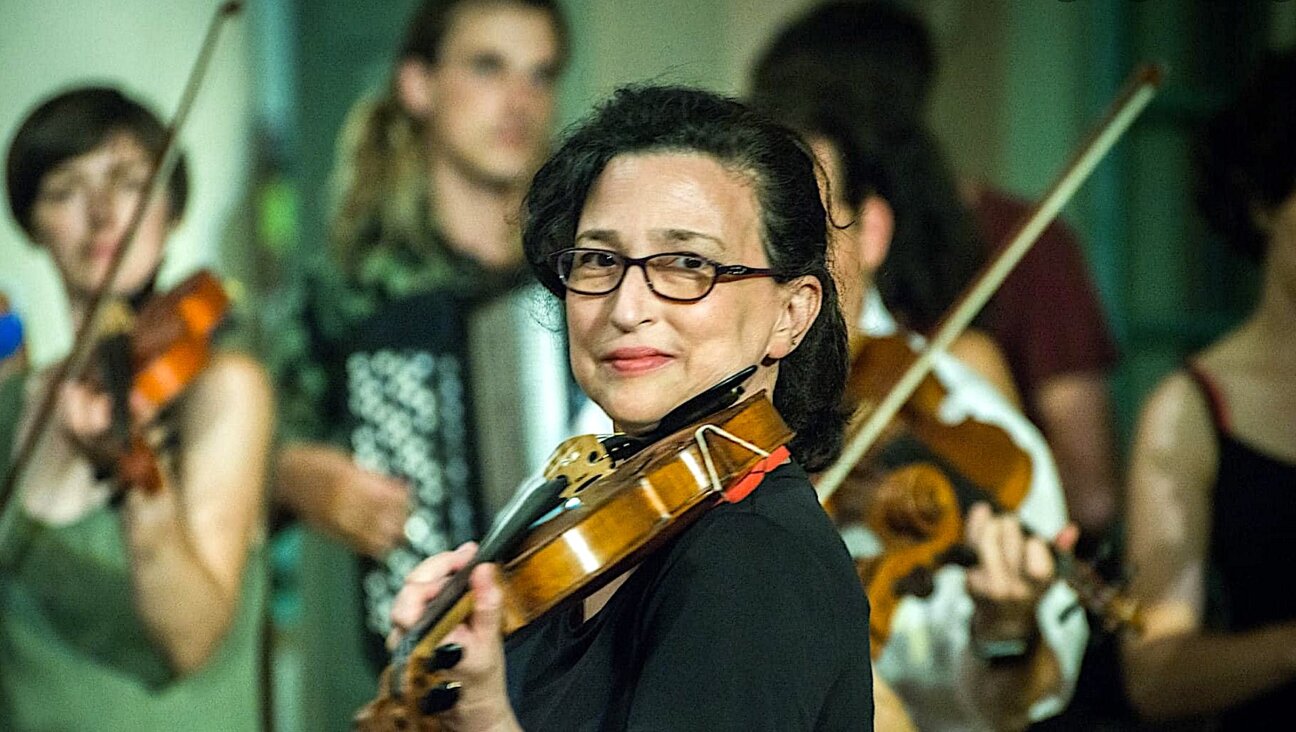Exhibit highlights the powerful impact of ‘The Dybbuk’ for the past 100 years
The play about love and supernatural possession symbolizes both the destruction of European Jewry and Jewish resilience
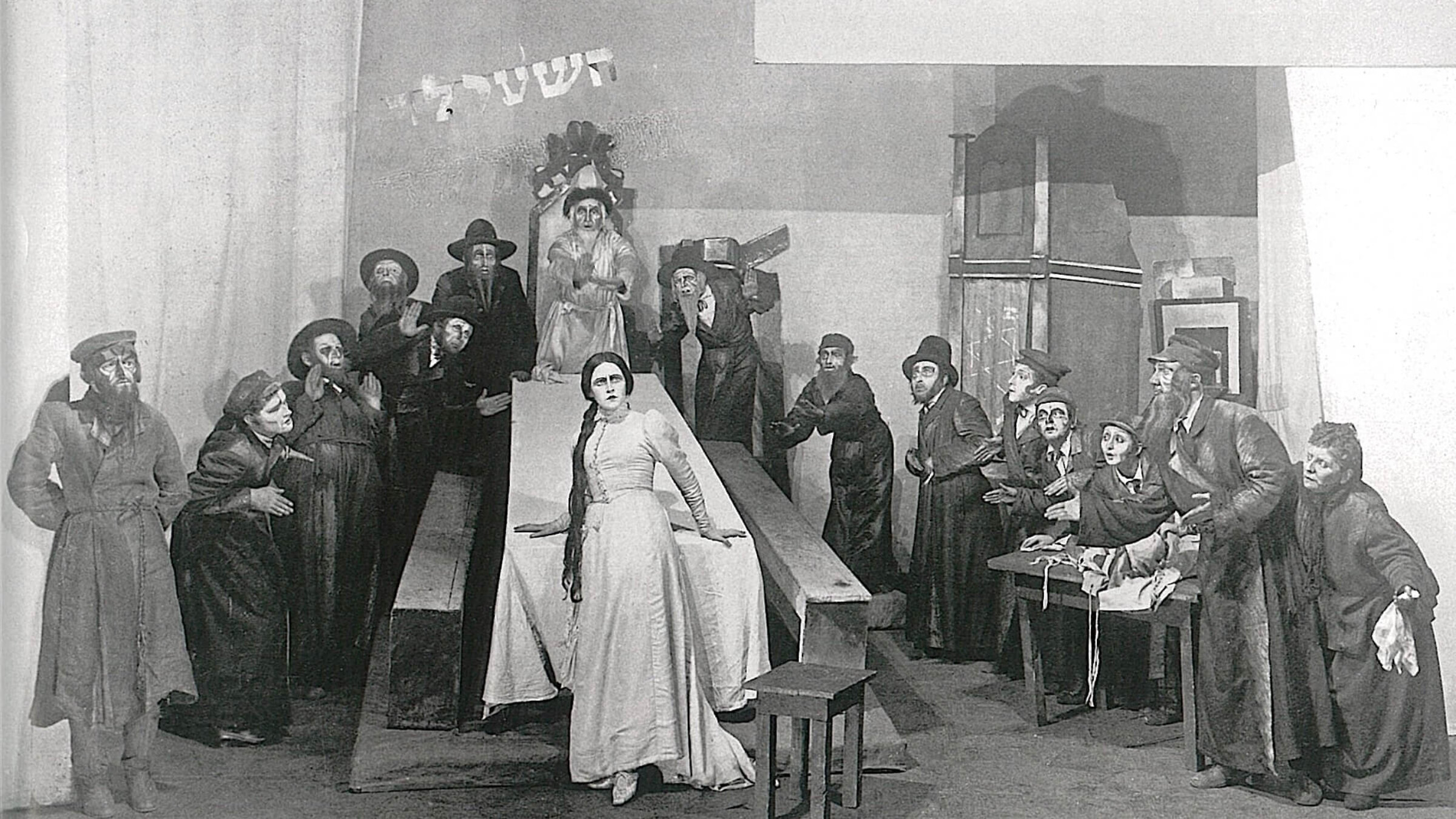
The Habima Theater in Moscow performing An-ski’s Dybbuk, ca. 1922 Courtesy of the Musée d’art et d’histoire du Judaïsme, Paris
At the 1920 premiere of S. An-ski’s play The Dybbuk, the audience itself seemed possessed.
The venue was the Elizeum Theater in Warsaw. Yiddish songwriter Joseph Rumshinsky was there that evening. He described the audience as sitting “silent and hardly breathing” as it “experienced something entirely new.”
And, as a new exhibition demonstrates, the play has never loosened its grip on the Jewish psyche. The Dybbuk: Phantom of a Lost World, now on view in Paris, features around 100 objects — including film and music. It’s a multimedia celebration of An-ski’s story and its extraordinary impact.
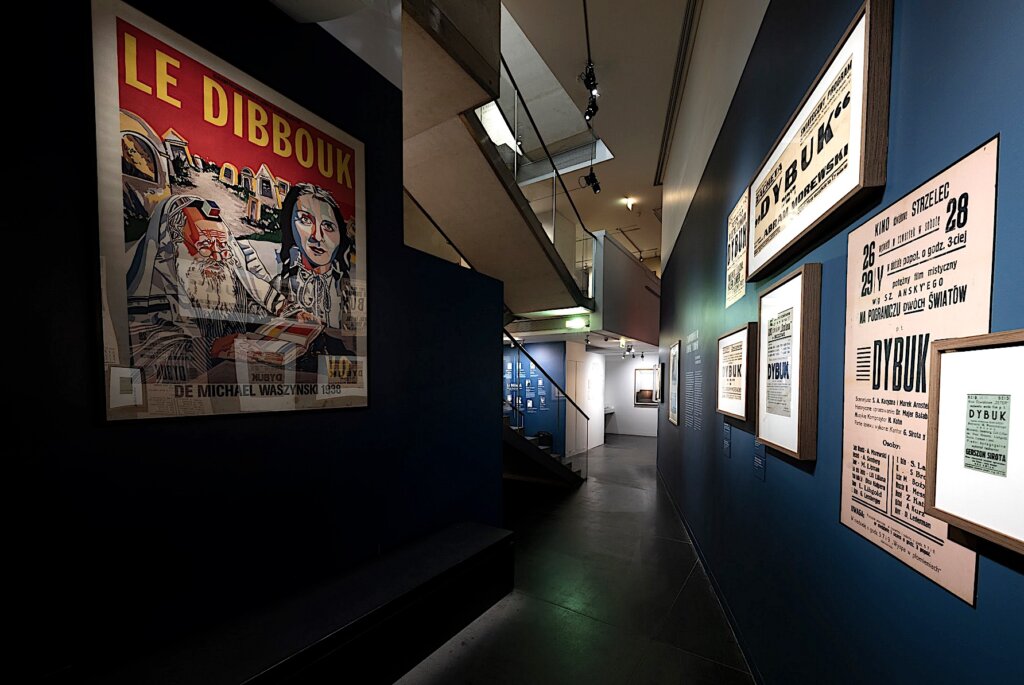
The play is a macabre tale of love, death and supernatural possession set in a Jewish shtetl. Khonen, a young scholar, is destined to marry Leah. But her father’s ambitions keep them apart. Khonen uses kabbalistic magic to ask the devil for help. He dies and becomes a dybbuk — a wandering soul that enters Leah’s body. A rabbi performs an exorcism to release her, but Leah chooses to die and follow Khonen to the spirit realm.
The first part of the mahJ exhibition helps visitors understand just how radical the play was.
An-ski believed passionately that modern Yiddish literature and art had to be rooted in Jewish folk traditions. He led expeditions into traditional communities in parts of what is now Ukraine, in order to record and preserve their folk customs and beliefs. (Expedition photographs actually appear in the show). His play The Dybbuk adapted old beliefs about human possession by spirits to create avant-garde theater.
The earliest performances in 1920-21 were staged by the renowned Vilner Trupe (Vilna theater troupe) — one of the first professional Yiddish “art theater” companies. The aesthetic, seen in photographs and original set and costume designs, was daringly modernist. It’s no wonder that audiences were fascinated, and that the Trupe performed to packed halls.

Starting in 1922, audiences around Europe could also see The Dybbuk performed in Hebrew by Habima. The mahJ exhibit includes vivid photographs of its star, legendary actress Hannah Rovina, in her almost Goth makeup. Nathan Altman’s set and costume designs are also on display. (Marc Chagall, Habima’s first choice, dropped out because of artistic disagreements).
In 1937, An-ski’s play was reimagined. As conditions for Jews in Poland became more dire, director Michał Waszyński (born Mosze Waks) turned the play into one of the greatest classics of Yiddish cinema. Even today, scenes like the “dance of death” in the town square, or the kabbalistic exorcism in the synagogue, are mesmerizing. The full film with English subtitles can be watched online.
In the mahJ exhibition, the movie plays continuously on large screens in three separate galleries. As visitors keep seeing it, the sound of its Yiddish speech is constantly — hauntingly — in their ears. Still images from the film, as well as posters and other ephemera, line the walls.
Many of the film’s actors, and probably all the extras playing the townsfolk, were murdered in the Holocaust. As a result, the film itself became a kind of dybbuk: the ghostly soul of a vanished Jewish world that lives on in the imagination.
The postwar afterlife of An-ski’s Dybbuk has a different tone than anything imaginable before the war. It inevitably symbolizes all that was destroyed in Europe — but also represents Jewish resilience and rebirth from literal ashes. Artists engage with it in complex ways, with mingled grief and hope.
In one gallery of the exhibit, a monitor plays the 1960 English-language TV version of The Dybbuk by Jewish-American director Sidney Lumet — produced the same year that Adolf Eichmann, code-named “Dybbuk,” was captured by the Mossad and put on trial in Jerusalem.
Leonard Bernstein’s music from the 1974 ballet version of The Dybbuk (choreographed by Jerome Robbins) plays in another gallery. Interestingly, Bernstein’s score is structured around the numbers 9, 18 and 36, which relate to the Hebrew numerical value of Leah’s name in the play. 18 also stands for “chai” (life), symbolizing Jewish survival.
A separate screening room features the prologue to the Coen Brothers’ 2009 A Serious Man. The scene is shot entirely in Yiddish. A shtetl couple receives a guest who may or may not be a dybbuk — with ambiguous results. The rest of the film tells the Job-like story of a Jewish man in Minnesota in 1967. Does the prologue just evoke his Jewish ancestry? Or is his destiny shaped by the couple’s (possible) encounter with a dybbuk?
In another gallery, photographs by Israeli artist Sigalit Landau show an exact replica of the dress worn by Hannah Rovina in Habima’s Dybbuk, but in black instead of white. Landau submerged the dress in the Dead Sea, and documented its gradual “possession” by salt. The dress turns bridal white — preserved, but also transformed.
Images from Polish-language adaptations of The Dybbuk show non-Jews grappling with the destruction of Jewish life in their country. A 2003 performance took place on Yom Kippur. A 2015 performance on the site of the Warsaw Ghetto incorporated testimonies from survivors. These Poles too are haunted by Jewish ghosts.
An-ski’s play was originally titled Between Two Worlds — between this world and the supernatural, between Jewish tradition and modernity. And since the Holocaust, between a destroyed Jewish past and potential Jewish futures. The play seizes the mind, and doesn’t let go.
“The Dybbuk: Phantom of a Lost World” is on view at the Museum of the Art and History of Judaism (mahJ) in Paris through January 26, 2025.
